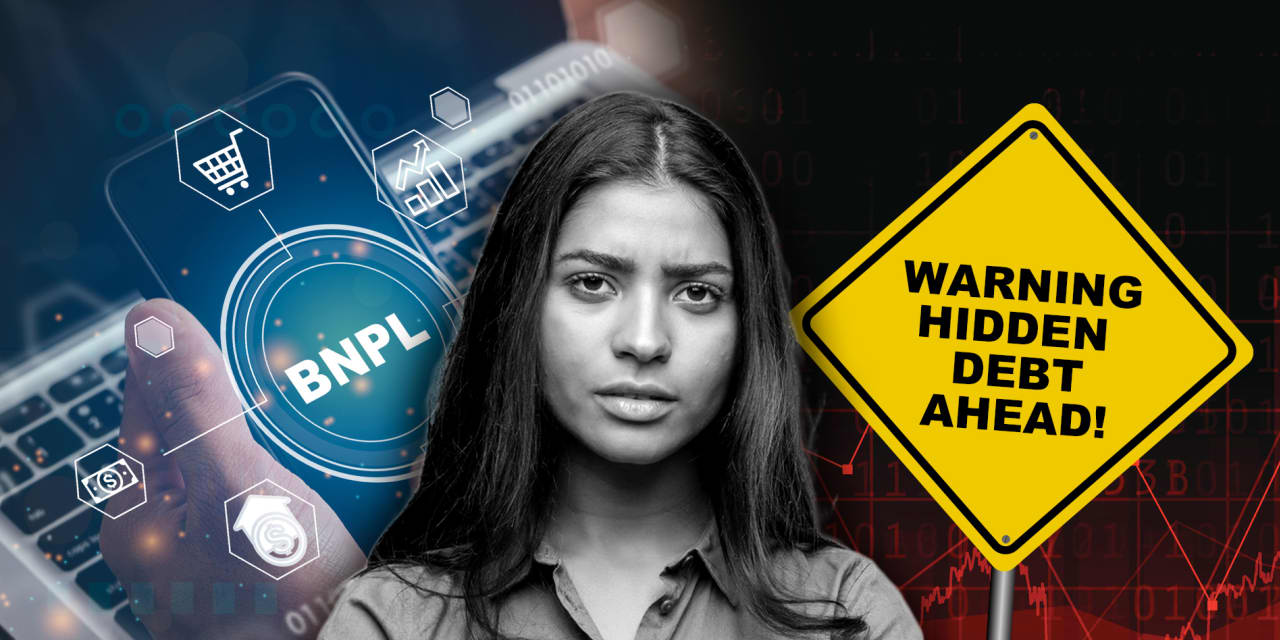New record-breaking numbers on buy-now-pay-later purchases show consumers aren’t getting spooked by the emerging payment method that some economists call “phantom debt.”
U.S. shoppers racked up $16.6 billion in buy-now-pay-later purchases during the holiday season, helping to close out a big year for the flexible payment option.
That’s according to Adobe Analytics, which pointed to a 14% increase in buy-now-pay-later purchasing over the holidays in a report released Thursday. Over the course of 2023, BNPL spending rose about 14% as well, to hit $75 billion.
The numbers are a bold-faced win for the emerging payment method. But some economists worry about the lack of clarity on the full size of the industry and the financial health of BNPL users.
BNPL services allow shoppers to split purchases into installments, and some options are interest-free. Consumers typically make payments over four to six weeks, but some plans allow for longer payment schedules. The payment method has surged in popularity, adopted first among younger and lower-income consumers, then expanding to a broader range of shoppers.
“I’m surprised that’s all the increase is,” Tim Quinlan, senior economist at Wells Fargo Economics, said of the 14% year-over-year rise in BNPL spending.
Quinlan and Shannon Seery Grein, an economist at Wells Fargo Economics, recently dubbed buy now pay later “the phantom debt.”
There’s no “definitive measure” yet on the full extent of BNPL use, Quinlan and Grein noted. Until that happens, “there is no way to know when this phantom debt could create substantial problems for the consumer and the broader economy,” they wrote.
For context, the dollar volume on loans from the industry’s biggest firms jumped to $24.2 billion in 2021 from $2 billion in 2019, according to the Consumer Financial Protection Bureau. That’s a 1,092% rise.
“I don’t think there’s anything inherently wrong with BNPL programs,” Quinlan told MarketWatch on Thursday. There are upsides, including greater purchasing power for consumers and more inclusion for people who may not have credit cards, good credit history or an established banking relationship.
But he worries about the potential for overspending if people get “lulled into a sense of complacency” by “small payments that add up to a big problem.” Another concern is the limited transparency in an industry with little regulation and monitoring, he said.
Given that context, it’s tough to say what the growing use of BNPL shows about consumer health right now, Quinlan noted.
Wall Street and policymakers, like the Federal Reserve, are focused on consumers’ financial well-being as they hold their breath for a “soft landing” that avoids recession after a bout of red-hot inflation and steep interest rate hikes. Americans have $1.08 trillion in credit card debt through the third quarter of 2023.
“In an uncertain demand environment, retailers leaned on discounting and flexible payment methods to entice shoppers this holiday season,” Adobe Digital Insights lead analyst Vivek Pandya said in a statement Thursday.
Growth in online holiday spending through BNPL methods outpaced growth in overall online spending during the period, with Adobe calculating a roughly 5% boost in general online spending from the start of November to the end of December. That amounted to $222 billion in spending.
Over half of that came from five categories: electronics, apparel, furniture, groceries and toys.
Investors seemed to notice the BNPL momentum in 2023, with Affirm Holdings Inc. shares
AFRM,
rallying more than 400% during the year. Admittedly, that rally followed a 90% plunge seen during 2022, and the stock is down to start 2024 as well.
“We underwrite every transaction individually and only approve consumers for what we believe they are willing and able to repay. Because we do not charge any late or hidden fees, our success is aligned with consumers successfully managing their finances,” an Affirm spokesperson.
The company says it advocates for BNPL inclusion in credit reporting so consumers can build their credit scores and lenders can have a full view of a person’s debts.
Regulators, like the Consumer Financial Protection Bureau, have also been watching BNPL’s momentum.
There are many BNPL users who tap the payment method “without any noticeable indications of financial stress,” CFPB researchers wrote last year in an analysis of consumer survey responses.
Still, compared to people who didn’t use BNPL methods, the report said BNPL users more often said they had debt, carried credit-card balances and used high-interest financial services like payday lenders.
Major credit reporting companies acknowledge there’s still a ways to go.
An Equifax
EFX,
spokesperson noted the credit reporting company started including buy now, pay later loan payment information in U.S. consumer credit reports starting in February 2022.
The BNPL reporting can help strengthen a consumer’s financial profile and serve as a “stepping stone to other types of credit.”
“Equifax is continuing to approach BNPL with an eye toward ensuring the inclusion of BNPL data on consumer credit files has a predictable impact on credit scores,” the spokesperson said. “BNPL is an emerging payment type in the U.S. and while there is an initial volume of BNPL loans, they are not being broadly reported at this time.”
Experian
EXPGY,
made a similar point.
“The practice of BNPL data reporting is currently limited; however, Experian is engaged with partners in the BNPL industry to make this data accessible to clients and consumers,” the company said in a statement, noting its long support to fold in data that builds consumers’ credit profiles.
Experian said its aim “is to drive transparency into the BNPL industry, resulting in improved support of consumers and risk management for lenders.”
Related: Is America’s record credit-card debt a red flag for the economy? ‘The trends are definitely not good.’
Read the full article here


